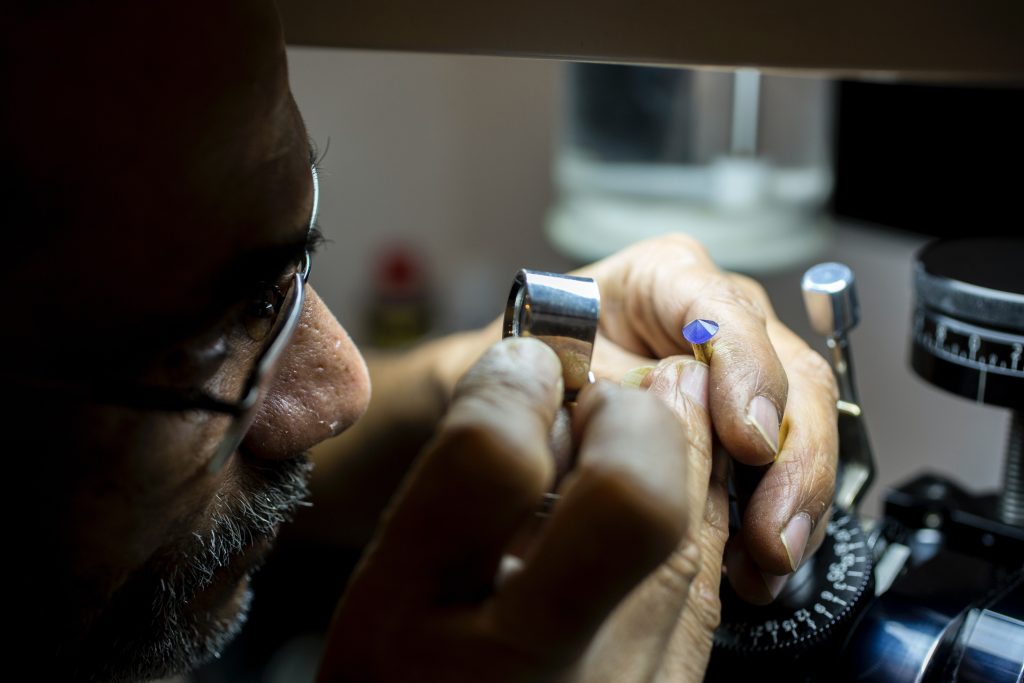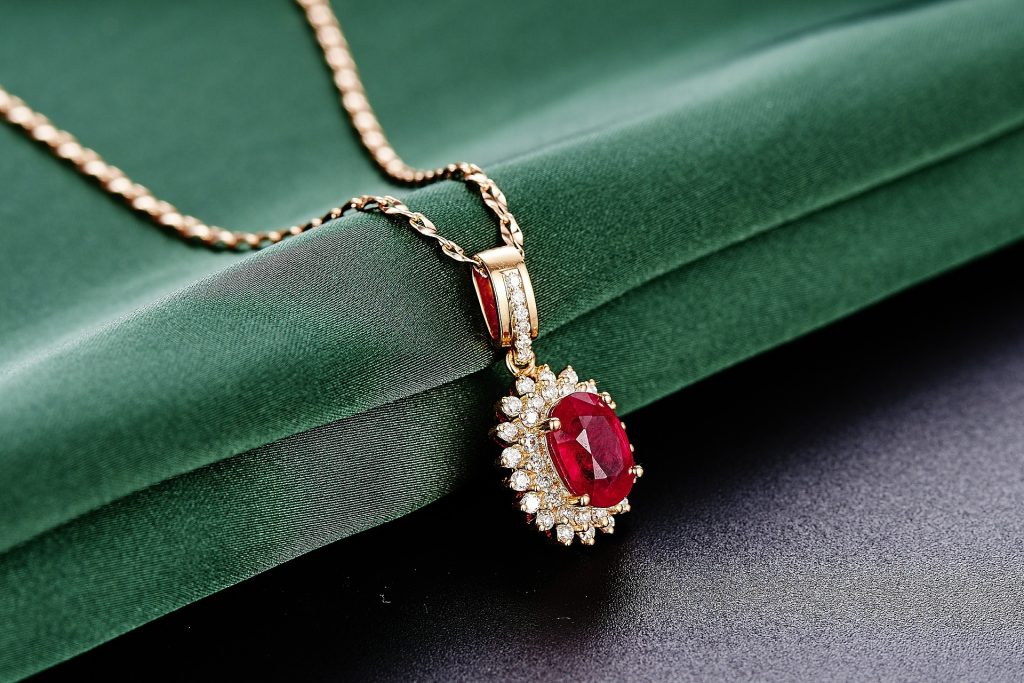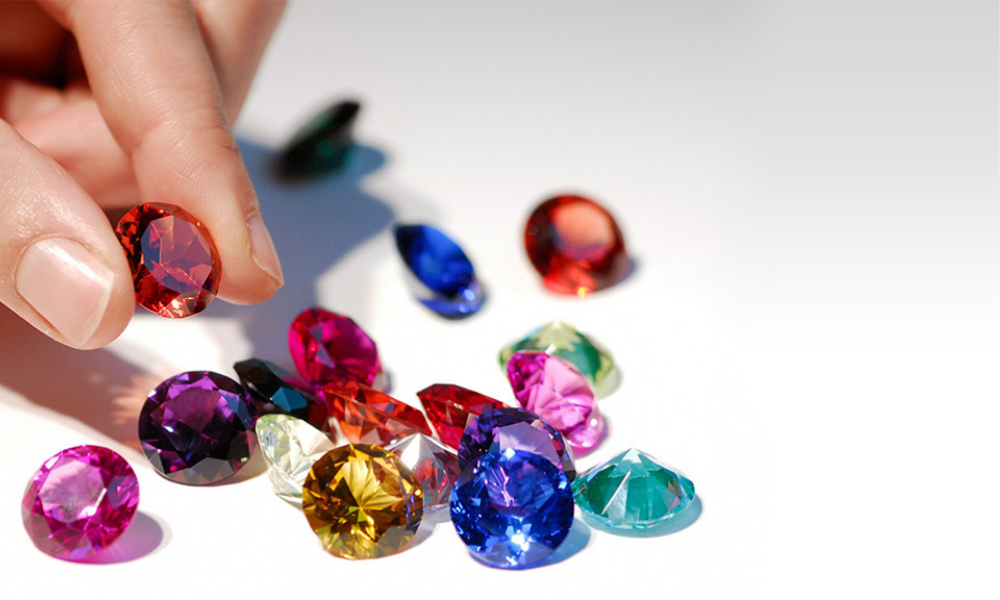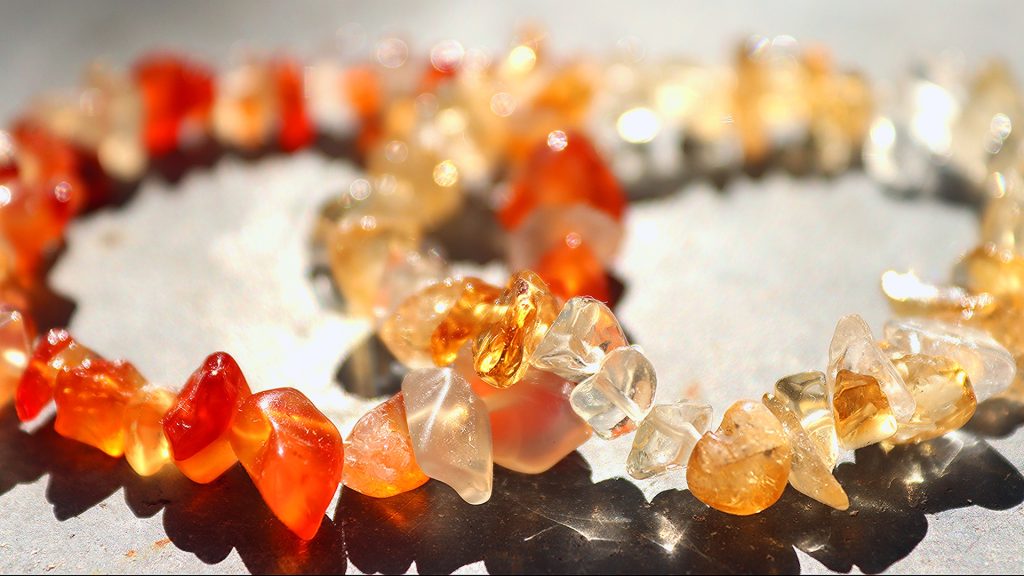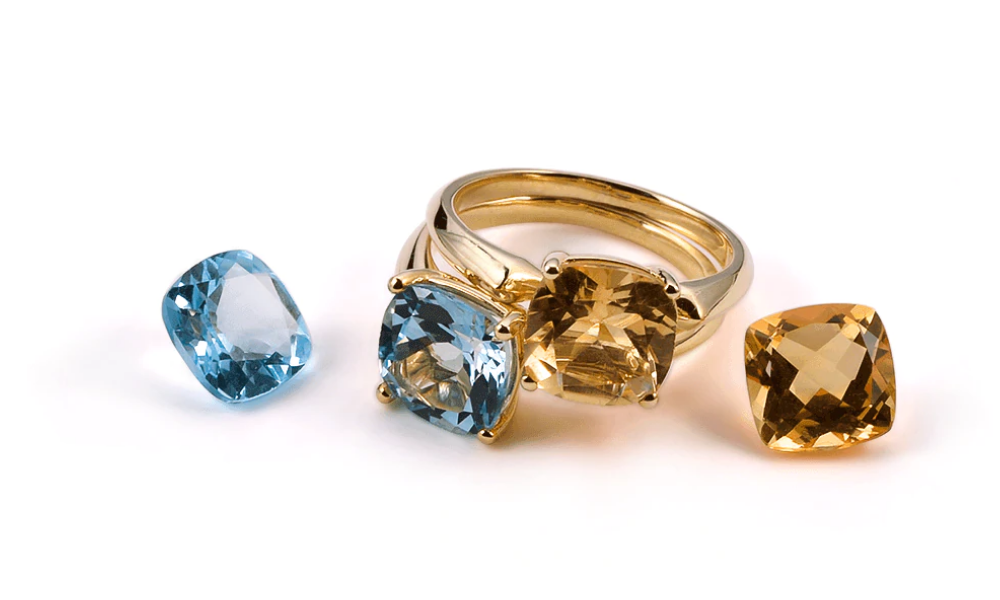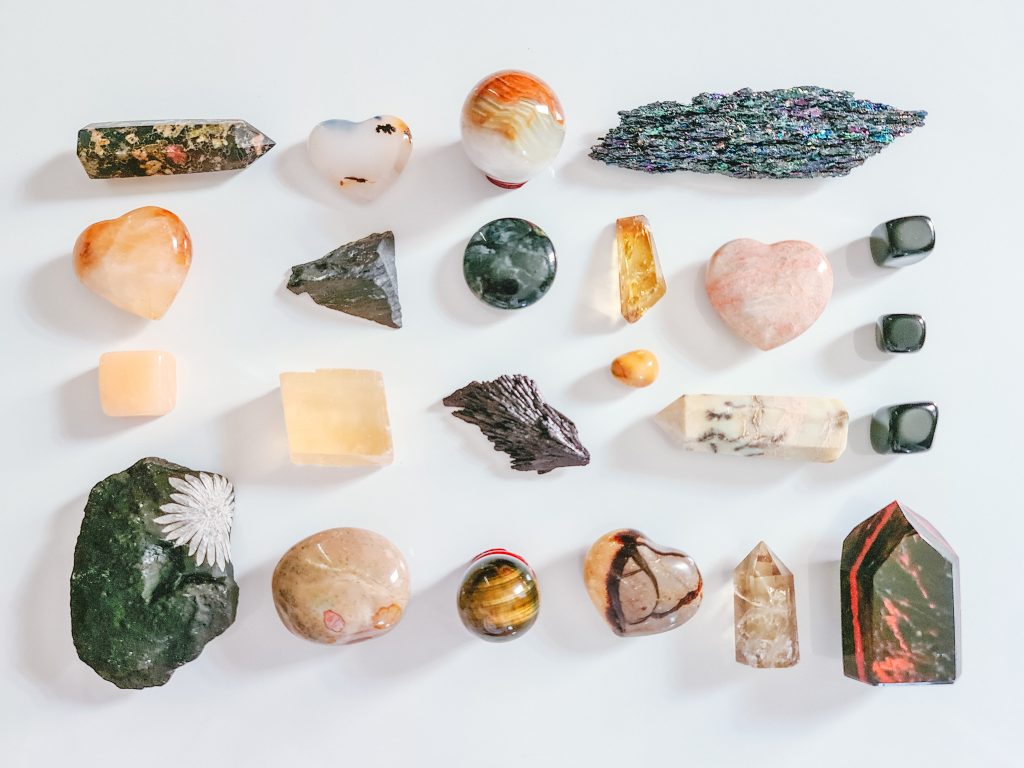If a gemstone is artificially treated using heat, lasers, or chemicals, it can’t be determined if it’s a fake or a natural stone. In some cases, fakes can be told apart by how cool they are when they’re picked up. A natural stone will warm up your body temperature, while a fake one won’t change temperature. Buying from a reputable retailer is the best way to ensure high-quality stone.
When buying a gemstone, check the gemstone’s color and luster. These two factors can help determine whether the gemstone is synthetic or natural. A stone’s luster and quality will be evident if it has been polished and has a lustrous finish. You can determine whether a stone is fake or genuine by checking these two factors. It’s important to remember that you’ll never know until you try it yourself.
What Are The Signs Of A Fake Gemstone?
Gemstones have long been used in jewelry as a beautiful natural phenomenon. We all want to add gemstones to our collections, whether Mughal jewelry or that odd ring you like to wear nowadays. It provides a beautiful touch to any fine jewelry by adding color to gold or silver. So, while the colors and patterns of gemstones make us all drool, how do we know if they are real or not? What if we’re picking up a knockoff without realizing it?
There Will Be Flaws
Because a genuine gemstone is a natural product, it will contain faults. There is no further interference save being mined, polished, and cut according to the jewelry’s specifications. A synthetic or imitation gemstone, on the other hand, will appear more perfect, if not faultless. So double-check that you’re picking up the right one!
It Wouldn’t Be Expensive
It’s possible that if a gemstone dealer offers prices that seem too good to be true, they are. Natural gemstones, such as rubies and sapphires, will have varied costs depending on their weight, carat, and color but will still be on the more expensive side in comparison. Fake / copied gemstones, on the other hand, are usually less expensive.
Unlike Synthetic Stones, The Sparkle & Shine Will Be Different
A genuine gemstone’s gleam will be faint since it has been worn down by nature. A synthetic one, on the other hand, will shine brighter. Even though it appears to be the other way around, it is not. Gemstones have a lower luster than synthetics because they are a natural occurrence.
The Gemstone’s Weight Will Vary
A synthetic gemstone is typically denser than a natural gem, and as a result, it is always slightly heavier. So, while you’re comparing gemstones, you have to pick them up in your palm, and you’ll know which one is genuine!
Always Request The Gemstone Laboratory Report
While all of these methods are simple to implement and aid in acquiring a quick understanding of gemstones, a lab report is always preferred. Even if it’s merely polishing and cutting, every stone goes through a procedure. And the stone’s report mentions all of this. Depending on the treatments, some gemstones that appear honest may be synthetic. As a result, obtain the report and seek the advice of a gemologist.
What Are The 5 Steps To Know If A Gemstone Is Real?
Not everything that glitters is gold! This might also be said for that gemstone you’ve wanted to wear for a long time. The sparkle, brightness, color quality, and longevity of that seemingly beautiful but perhaps false gemstone may entice you to purchase it.
In India, gemstones are highly prized for their astrological properties. Diamonds can indeed increase the strength of planets if a suitable stone is chosen.
Due to the increased demand for valuable stones, consumers have been misled into purchasing imitation gemstones of the same size, shape, and color as natural-mine stones. According to Pankaj Khanna, Founder and Managing Director of Khanna Gems Private Limited, “To reap the true benefits of gemstones, here is a list of things to bear in mind before making that priceless purchase.”
To Determine Whether A Gemstone Is Natural Or Synthetic, Perform The Following DIY Test
A natural gemstone has not been artificial or created in a lab. Every gemstone has a synthetic equivalent that is widely available on the market.
Synthetic gemstones have a higher luster and brilliance than natural gemstones. Customers have difficulty identifying imitation gems and spend a lot of money on them.
While it is beyond the ability of the average individual to tell the difference between real and imitation gems, specific DIY tests can help. The first step is to inspect the stone for any inclusions visually. If you can’t see any inclusions with your naked eye, use a magnifying glass of at least 10X to see if the gemstone includes any. Check for any marks or chipping to see if the gemstone has been taken out of a ring. While transparent and flawless gemstones are rare, inspect the gemstone for any cracks, scratches, or black patches before making your purchase. You can also get advice from a professional. While transparent and flawless gemstones are rare, inspect the gemstone for any cracks, scratches, or black patches before making your purchase. You can also seek the advice of a skilled gemologist to determine whether the gem is natural or not.
After Confirming The Gemstone’s Genuineness, The Following Step Should Be To Examine The Gemstone’s Color
Nowadays, all gemstones are treated to improve their color. The gemstone you want to buy should have brilliant color and be even and appealing to the eye. Examine the stone through a magnifying lens to check if it has an unusual opacity and color concentrations to see if this is the case.
A Seller’s Credibility
Finding the right diamond can be challenging. The first step is to identify a reputable seller who can educate you about gemstones and assist you in selecting the right quality, cut and type of gemstone for your requirements.
This will assist you in making an informed purchase selection. Even reputable jewelers can offer fake stones. Therefore it’s necessary to be cautious when purchasing even from the greatest jewelers.
A government laboratory must certify any gemstone or diamond before it may be sold. When buying gemstones and diamonds, consumers should be cautious and avoid falling prey to advertising tactics such as celebrity endorsements, offers, and discounts; the only way to be sure is to demand an appropriate government lab certificate, which clearly states the gemstone’s authenticity and any treatments it may have undergone.
Shape & Design
When purchasing a gemstone, consumers are usually very particular about its shape. Each cut and shape has its unique qualities. When purchasing a to meet the skin and allowed free of flaws. To achieve the best astrological outcomes, the ring or pendant should be made to meet the skin and allow the rays to flow through the gemstone and into the body. Gemstones are worn to draw extra energy from the planets they represent. As a result, if a planet is weak, one should wear a gemstone to gain the necessary strength.
Pay According To Transparency
You should check the gemstone’s transparency after nailing down the above points. The higher the value of a gemstone, the more transparent it is. However, be aware that the transparency should be natural rather than the result of heating, glass-filling, or metal filling. The augmentation of gems, which is very common today, renders the gem unusable.
How To Identify Gemstones?
Most gemstones can be immediately identified by noting simple features like color and heft. However, if you want a more complete and exact identification, you’ll need to study the stone’s interior using specific instruments.
Using Identification Charts
- Invest in a chart for identifying gemstones. If you expect to be recognizing gemstones frequently, it’s a good idea to invest in a printed chart or reference manual.
When in doubt, search for a book or chat with the Gemological Institute of America’s stamp of approval (GIA).
- Basic charts can be found on the internet. If you only need to identify a gemstone on rare occasions, you may be able to complete the process by using online gemstone identification charts. These charts are far less detailed and extensive, although they could be helpful in a situation.
you can utilize the Hiddenite Gems gemstone identification chart when you know the color and hardness
You can utilize the Gem Select RI chart when you know your refractive index and birefringence http://www.gemselect.com/gem-info/refractive-index.php.
A free Mohs Scale chart is available from the American Federation of Mineralogical Societies (AFMS): http://www.amfed.org/t mohs.htm
Verifying That The Stone Is A Gemstone
- Feel the surface of the stone. A rough or sandy-textured stone should not be classified as a gemstone.
- Examine its adaptability. An easily malleable stone—that is, one that can be shaped by hammering, crushing, or bending it—is more likely to be a metallic ore than a gemstone.
A crystalline structure can be found in genuine gemstones. Cutting, fracturing, and abrasion can be used to shape this structure, but it has set planes that cannot be altered by pressure alone.
If you don’t want to break a stone, don’t hit it with a hammer. Although genuine gemstones do not bend or reshape, they do break.
- Learn which materials aren’t considered gemstones. Pearls and fossilized wood, for instance, can be wrongly labeled as jewels, but they do not meet the criteria in the strictest sense of the term.
- Synthetics should be avoided. Synthetic stones have the same structure, chemical composition, and physical attributes as natural stones, but they are manufactured in a laboratory rather than occurring naturally. Several traits can usually be used to identify a synthetic.
Curve growth patterns inside synthetic stones are more common than angular ones.
Gas bubbles that are spherical and come in long strings are frequently an indicator; however, be cautious because a gas bubble in an inclusion might arise naturally.
Platelets of platinum or gold can adhere to synthetic stones.
Fingerprint-patterned inclusions, nail-shaped inclusions, chevron (v-shaped) development patterns, wispy veil-like inclusions, and internal columnar structures are all common in synthetics.
- Keep an eye out for rip-offs. An imitation stone is a material that, at first glance, appears to be a genuine gemstone despite being produced of a different material. [4] These stones can be natural or artificial, but a few approaches can be used to identify them in either case. When inspecting Turquoise, Lapis, Sapphire, Ruby, and Emerald, pay extra attention because there are various treatments available on the market that make the stones look natural.
An imitation’s surface may appear pitted and uneven, similar to an orange peel.
Swirl patterns are known as “flow lines” and can be found in some imitations.
Imitations frequently contain large, spherical gas bubbles.
Imitations have a lighter feel than their original equivalents.
- Determine whether the gemstone is a pieced-together piece. Stones that have been assembled are made up of two or more materials. Although synthetic components are sometimes blended in, these stones may be made of genuine gems.
When inspecting the stone for evidence of assembly, use a penlight to illuminate it.
Look for luster differences or colored vs. colorless cement.
Look for the “red ring effect” as well. Look for a crimson ring along the stone’s outer edge when you turn it over. You most likely have an assembled stone if you see the red ring.
Conclusion
A gemstone can be a fake if it has inclusions. A genuine gemstone will be a natural stone. The stone should be smooth and free of imperfections. If it is a fake, you should avoid it. If you have any doubts, a genuine stone will be much cheaper. When it comes to jewelry, you can use this method to detect whether a gem is a fake or not.
While the appearance of a gemstone is an essential factor in determining whether it is accurate, there are other ways to determine if it is fake. A gemstone must be smooth and not malleable. The stone should be composed of more than one piece. In addition, a natural stone will have fewer inclusions than a fake. Lastly, it will have a higher price than a fake.

